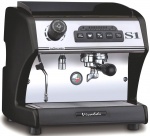 |
LaSpaziale S1 Vivaldi I Website
|
S1 Vivaldi Power AnalysisIn the analysis below, I used a Fluke 179 multi-meter with an AC current probe to capture the current in all possible operational states. Since the voltage drop in the line varies with current, I also recorded the voltage of each measured state. The error column is a "fudge factor" I used to account for the error in the inexpensive AC current probe. (Note: Since doing the original analysis I purchased a Kill-a-Watt automated measurement device. Using this device, I determined that the original current probe was measeuring 15% low. So I used 115% as a "fudge factor" in the analysis below.) Multiplying these values together yields the total watts consumed by each operational state. My latest electric bill shows that the power company is charging me about 11 cents per kw-hr. I used that value in the calculations.The final step in the analysis is to determine the duty cycle for each mode to obtain the actual cost for each function. I used a stop watch to measure a few cycles while the machine was not being used to pull shots and calculated the duty cycle. I figure I don't actually pull shots for more than 5 minutes per day. If the machine is running the pump and both boilers for this entire time (doubtful) that adds only 0.35% duty cycle for that mode. For normal home use, the standard cycling of the boilers while idle swamps out the cost of the extra power required to pull shots because it is such a small fraction of the total duty cycle. Feel free to download the Excel file using the link beneath the spreadsheet. You can modify the electric cost per kw-hr to match your price and validate your own duty cycle. Based on use of the Kill-a-Watt device with my current S1 Vivaldi II, I can confirm that there is no measureable difference between the models. The only difference is the availability of the optional timer module. If you plan to purchase this timer with the intent to use it to save money by not running the machine 24x7, you can use this analysis to calculate your payback time. Below shows my payback time based on 14 hours on-time per day:
| |||||||||||||||||||||||||||||||||||||||||||||||||||||||||||||||||||||||||||||||||||||||